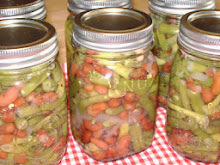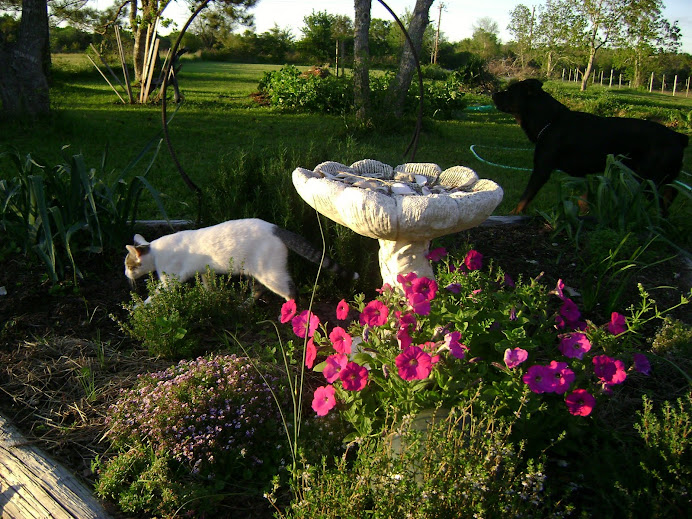Horseradish Armoracia rusticana
Since we are having such a mild winter this year I am just now getting to things that should have probably been taken care of sooner, like digging up the horseradish. Most of the roots will be transplanted, while some are brought indoors to clean up and store.
The optimum time for harvesting horseradish in Southeast Texas is normally right before the first hard frost. Usually for us that would be right before Christmas. I love making hot tangy sauce with it during a holiday feast of fresh Gulf Coast seafood.
We had a good frost this season, but I don't know how hard it actually was. At least it seemed mild compared to previous seasons. So here it is, the end of January and I'm just getting around to this task.
Horseradish is a hardy Perennial for zones 3 to 10. I hear a lot of people only grow it as an annual because of its spreading nature. Not here at Thyme Square Gardens. Yes it spreads, but not terribly and it has a multitude of purpose for us.
The Horseradish is actually a member of the mustard family. I mention this because mustard is a well know trap crop used commercially and can be used for the same purpose in a garden as long as it is monitored during certain life cycles of different insects.
.
In the forefront of this garden path, on the right side you will see one of our horseradish plants. The foliage has long tooth shaped fronds that looks as though it belongs in the tropics. This plant was cut back severely earlier this summer as it became full of harmful insects. It carried everything from cabbage loopers to several varieties of beetles.The bad insects love this plant. The Horseradish was my night in shinning armour and protected my more valued vegetables in the garden. And actually that is my dog Han's doing his favorite job by chasing a cat out of the garden.
When using trap crops throughout the garden you must keep a keen eye on them during certain periods when they are doing their jobs. I monitor trap crops very carefully. This Horseradish was cut all the way back and I carefully carried the leaves to the end of the path where the chicken coop is. It is a squawking feast and my troubles are gone. This photo was taken mid summer where the plant has fully grown back with happy and healthy leaves free of insects until next spring. None of the roots of the plant are ever affected by any of this endeavor.
Every year I dig and move them around as we do our annual crop rotations. Many horseradish roots will be planted near and in the potato beds to keep the Colorado Potato Beetles away, although I have never seen one in my garden.
It is a very easy plant to grow. Find at least 6 nice roots at your local nursery. Plant them in full sun, although they don't seem to mind if they get a little partial shade from other plants. Be sure your soil is nice and loose and well composted.
I find a peaceful comfort knowing that I have companion plants throughout the premises working for me and my garden.
Here is an easy way to prepare my favorite Horseradish sauce.
Ingredients:
1 C fresh organic horseradish root, peeled and diced in small pieces
1 C fresh organic horseradish root, peeled and diced in small pieces
as needed cold water
2 T white vinegar
1/4 t salt
small covered glass jars
blender or food processor
2 T white vinegar
1/4 t salt
small covered glass jars
blender or food processor
Whip it up and store in the refrigerator. It usually lasts about 3 months.
Happy Gardening!!
Pammy

















































